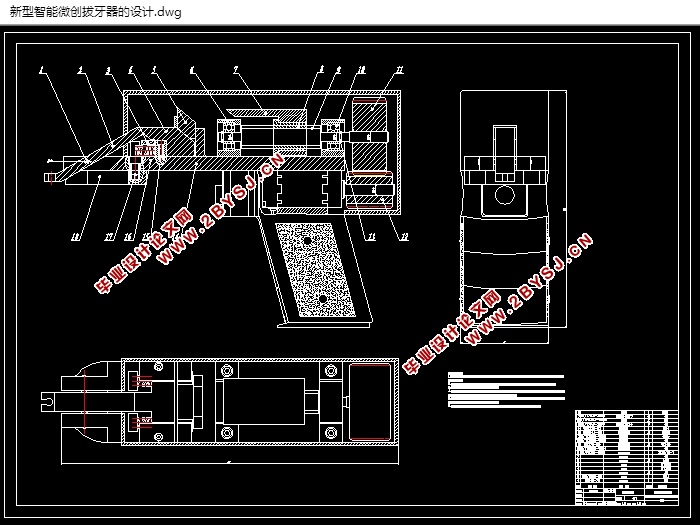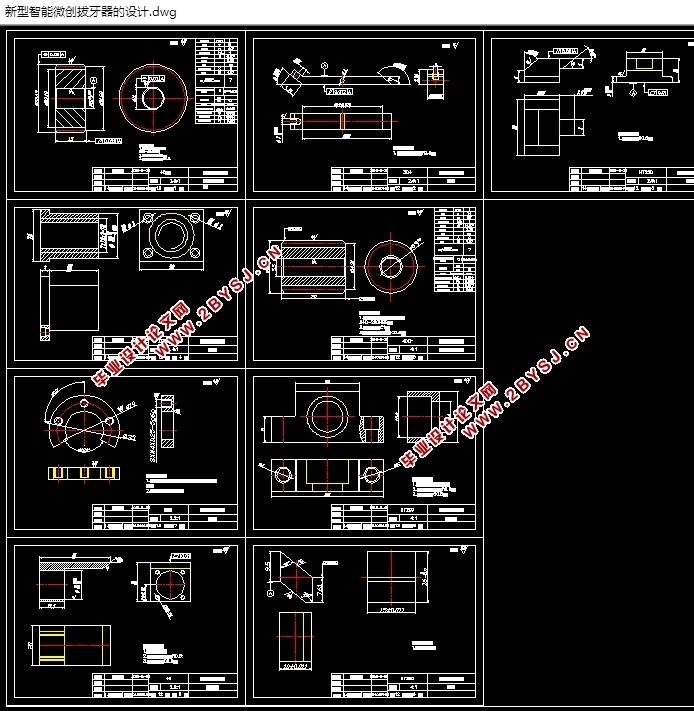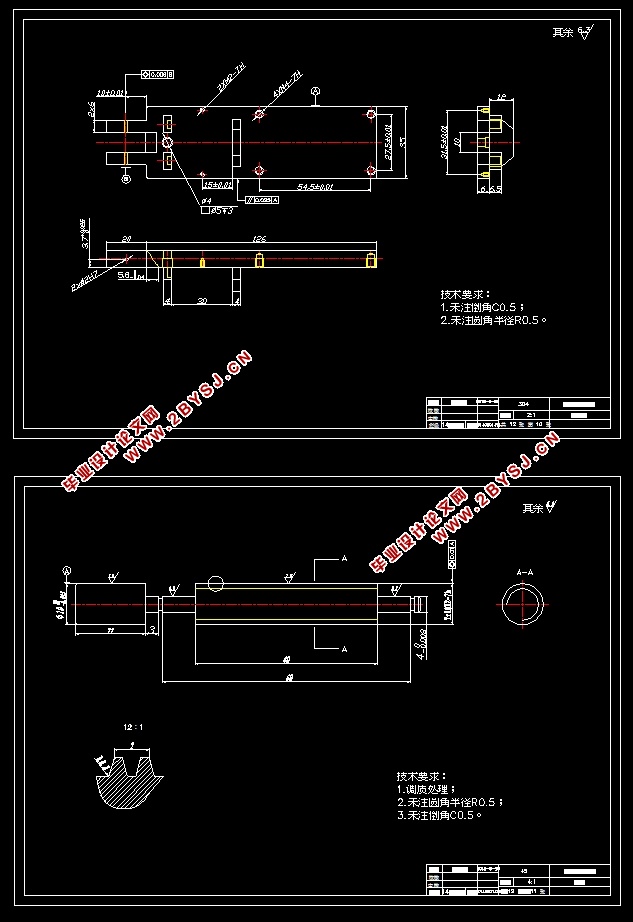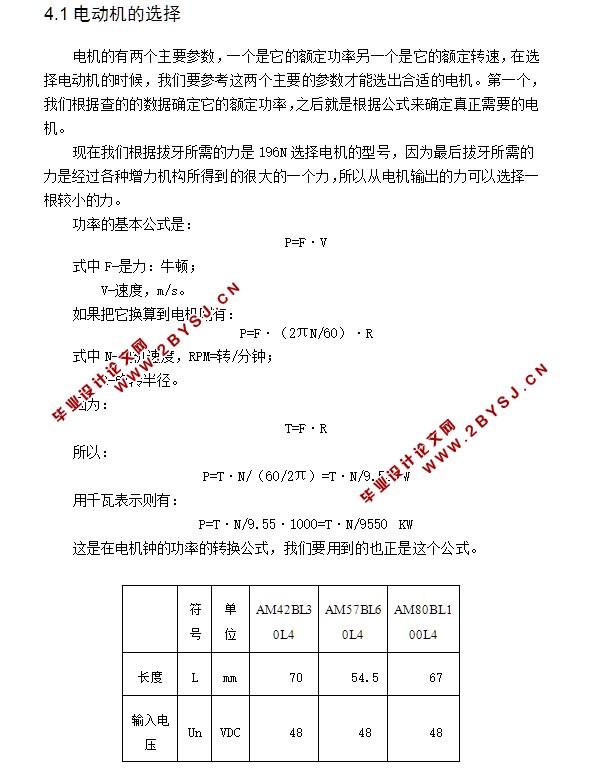新型智能微创拔牙器的设计(含CAD零件装配图)
无需注册登录,支付后按照提示操作即可获取该资料.
新型智能微创拔牙器的设计(含CAD零件装配图)(论文说明书15000字,CAD图纸12张)
THE DESIGN OF THE INTELLIGENT MINIMALLY INVASIVE TOOTH EXTRACTION DEVICE
摘要
鉴于现今的拔牙技术落后,导致病人在拔牙时会产生很大的伤害,对病人的心理上也造成了很大的伤害,所以我在参照国内外各个拔牙器械的设计后,对一种微创智能拔牙器进行了设计。设计理念就是利用各种增利的机构来达到拔牙的目的,本次设计用到的增利机构有滑动螺旋传动、斜楔机构、杠杆机构,由一种动力来驱动,由各个增力机构来传动,滑动螺旋传动采用的是螺杆转动螺母移动,斜楔机构就是很简单改变转动的方向也能达到增力的作用,最后通过杠杆拔起拔牙螺丝,达到拔牙的目的,这种拔牙的方式更加的先进,符合当前的科学技术发展进程,下面就根据上面阐述的这个思路来对毕设题目进行设计和计算。
关键词 拔牙;微创;机械
Abstract
In view of the current backwardness of tooth extraction technology, it will cause great harm to the patient during tooth extraction, and it will also cause great psychological harm to the patient. Therefore, after referring to the design of various tooth extraction instruments at home and abroad, I have developed a minimally invasive method. The smart tooth extractor was designed. The design concept is to use a variety of boosting mechanisms to achieve the purpose of tooth extraction. The augmented body used in this design is a sliding screw drive, a wedge mechanism, and a lever mechanism. It is driven by a type of power and is powered by various force increasing mechanisms. Transmission, sliding screw transmission is used to rotate the screw nut, wedge mechanism is very simple to change the direction of rotation can also achieve the role of force, and finally through the lever pull up the extraction screw, to achieve the purpose of tooth extraction, this extraction method is more The advanced, in line with the current process of scientific and technological development, the following based on the above-mentioned ideas to design and calculate the completion of the topic.
Keywords tooth extraction minimally invasive mechanical




目录
1绪论 14
1.1拔牙的背景与发展 14
1.2对现存拔牙器械的分析 14
2微创拔牙系统技术 16
2.1微创拔牙系统的概念 16
2.2微创拔牙系统的要求 16
3设计方案的选择 17
3.1手动式拔牙器 17
3.2电动式拔牙器 17
4 拔牙器的传动设计 18
4.1电动机的选择 18
4.2齿轮传动的选择 19
4.3螺旋传动的选择 27
4.4斜楔机构的选择 33
4.5杠杆机构的选择 36
4.6零件的设计 37
5零件的工艺分析 38
5.1毛坯制造方法和种类 39
5.1.1公差等级 39
5.1.2零件的表面粗糙度 39
5.2制定工艺路线 39
结论 40
致谢 42
参考文献 43
